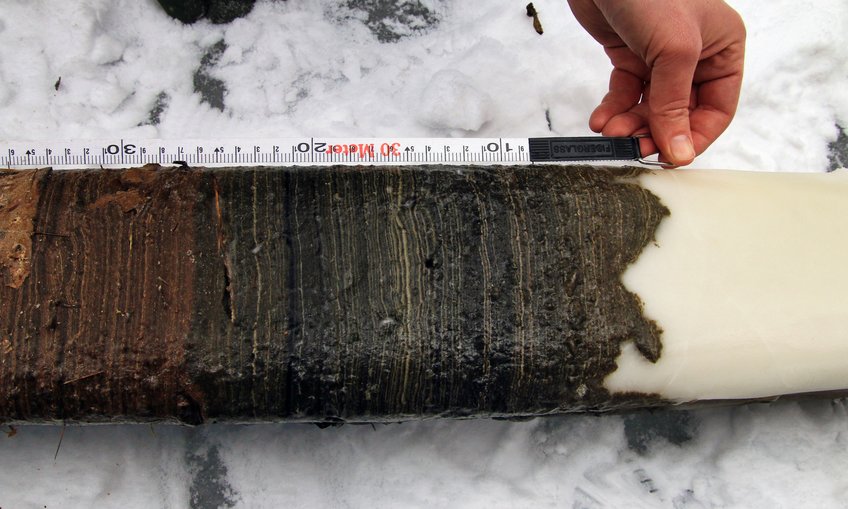Researchers announce major step towards defining a new geological epoch
Officially, we are currently living in the geological epoch known as the Holocene. But the profound impact of human activities on the Earth's systems has triggered discussions regarding a new era: the Anthropocene. Yet, until now, there has been a lack of clear scientific evidence, specifically a unique reference point, to signify the onset of this new epoch. An international geological working group has now successfully addressed this gap. In the future, a small lake in Canada will serve as the designated geological repository of evidence, marking the transition into the human era. The Max Planck Society has played a significant role in propelling research on the Anthropocene and has contributed valuable insights to the efforts of the working group.

Drill core from Crawford Lake: In this Canadian lake, calcium and carbonate ions from the surrounding rocks combine and crystallize into small calcite crystals when the water is warm. These crystals gradually sink and form a distinct white layer at the lake bottom each summer. This natural phenomenon provides researchers with a precise chronological marker, allowing them to determine the specific year being examined. Around the year 1950, there is a notable increase in the concentration of plutonium particles. This significant change serves as a clear indication of human impact and, consequently, provides evidence of the Anthropocene era.
© Tim Patterson
A prerequisite for the recognition of a new unit of the chronostratigraphic time scale is the identification and description of a geological profile indicating the onset of planetary-scale change, a Global boundary Stratotype Section and Point (GSSP). Since 2019, the AWG has coordinated a systematic study at twelve different sites across the globe, representing different environmental archives, for geological evidence of the proposed Anthropocene series in strata and its equivalent in time the Anthropocene epoch. After months of deliberations and a series of votings, the AWG now proposes a sediment core drilled from the bottom of Crawford Lake (Ontario, Canada) as GSSP candidate site of the Anthropocene series. The research findings of Crawford Lake provide strong evidence for the AWG's hypothesis that the unprecedented increase in industrial and socioeconomic activity of the Great Acceleration around the mid-twentieth century has caused alterations to the Earth System on a scale that terminated ~11,700 years of largely stable Holocene conditions and marks the beginning of a new Earth epoch.
The human-made markers such as artificial radionuclides, combustion particles, changed biotic populations, or organic pollutants found in sedimentary layers at the bottom of Crawford Lake are not only witness to the longevity and scale of human-caused planetary change at an annual resolution. The history of the lake is also emblematic of the socio-economic dynamics and violent histories that continue to drive the Anthropocene. The annually resolved layers of Crawford Lake's geological record cover centuries of changes to the local environment, including the botanical impact of small-scale agriculture practiced by Indigenous communities in the thirteenth to fifteenth centuries and the logging and milling that took place with the arrival of European colonial settlers in the nineteenth century. Yet the most fundamental change occurred during the mid-twentieth century with rapid industrial expansion in the region indicative of global trends, and coinciding with early fallout from atomic and thermonuclear weapons testing.
However, the recommendation of the Anthropocene Working Group (AWG) to designate Crawford Lake as the official 'Golden Spike' marking the Anthropocene still requires further voting within the stratigraphic professional community. If the proposal wins the necessary majority support, the International Union of Geological Sciences could officially ratify the new GSSP in August 2024. In the realm of public discourse, the Anthropocene has already become a widely recognized term. The term was introduced by Paul Crutzen, a Nobel laureate and former director at the Max Planck Institute for Chemistry in Mainz, Germany, during an international science conference in 2000. Crutzen subsequently played a pivotal role in shaping the concept and remained an active member of the AWG until his death in 2021.






